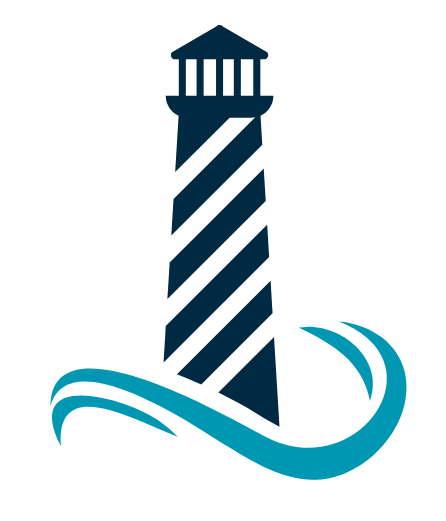Light-house Noise
Toot! Toot!
While no longer the standard for fog horns, the Daboll trumpet created quite the commotion when in operation. The trumpet was a very large wall-mounted steel horn, driven by a whole lot of hot air. Some lighthouses used multiple horns to push the sound around obstacles such as large pointy rocks. For several decades, prestigious seamen at light houses throughout the United States were able to really let them rip! These rarely functioning, but necessary pieces of equipment were in operation up until the late 1800s.
Developed by Celadon Leeds Daboll of New London, Connecticut, for the United States Lighthouse Board. This device was a small coal-fired hot-air engine that compressed air in a small cylinder and when fired up, would create a siren through a large reed horn.
Similar to a trumpet, the protruding horn of the Daboll trumpet could extend up to seventeen feet in length. The throat diameter on a seventeen-foot trumpet was about 3 ½” and flared out to a mouth of 38” in diameter. A machine located inside the lighthouse contained a resounding cavity and a 10″ steel reed. Air was compressed in a reservoir and the driven through the trumpet by hot steam. Once achieving a pressure of 15 to 20 lbs. the trumpet would create a loud and far-reaching toot. A magnanimous way to communicate with nearby mariners.


Sounds that guide

The Daboll trumpet toots were put to trial in 1874 by General Duane. The result of the not-so-scientific trial found the trumpets to be sub-par, under-representing the tooting-industry against a twelve-inch whistle. British stations reported the effectiveness range of five to ten miles. Canadian lighthouse engineers highlighted maintenance issues, frequent stoppages, and deterioration in sound quality over time.
By 1881, General Duane recommended the Daboll trumpet for stations lacking water supply or requiring varied signal sounds due to proximity to other signals. Despite its power and practical utility, the trumpet demanded skillful management and constant care.

Congress appointed funds in 1860 to experiment with “Daboll’s trumpet and other ear signals,” but significant progress did not occur for several more decades. Charles Miner Daboll, Celadon’s cousin, is credited with refining the trumpet for practical use.

Image: Air-Compressor Tanks for Fog Signals
Radio Stars
Alaska lighthouse stations also serve as vital relay points for radio signals, facilitating communication across vast distances. These stations are strategically positioned to transmit and receive signals, ensuring that messages can be passed efficiently from one end of the country to another. This capability is especially crucial in Alaska’s rugged and remote terrain, where traditional communication infrastructure is often lacking.

Ding! Ding!
Fog Bells & Bell Buoys
Make no mistake, you’re not at the Ritz! These bell buoys won’t be helping you with your bags anytime soon. They, along with fog bells, have long been integral components of maritime navigation. Sound is particularly helpful in foggy conditions where visibility is severely limited. These devices serve as auditory markers, helping ships avoid hazards and navigate safely.
A bell buoy is a floating device equipped with a large bell that rings as the buoy moves with the waves and currents. They provide the classic maritime ding-a-ling-ing. Their sound provides crucial point of references for mariners, allowing them to determine their position relative to the buoy and navigate through treacherous waters.
In addition to bell buoys, lighthouses and piers employ stationary bells. These often-mechanized bells do not sound with the motion of the ocean, but still provide an auditory aid for navigation. These bells are usually mechanically or electrically operated to produce a consistent sound signal that can be heard over long distances. Both bell buoys and stationary bells are vital for ensuring maritime safety, acting as reliable fog signals that guide vessels and prevent accidents in low-visibility conditions.
Check out the 2023 Coast Guard Buoy Tender Olympics!
Lighting on the edge
From Taters to Trollies
Alaska’s lighthouse history has over 100 years of maritime stories. Come adventure with us!
